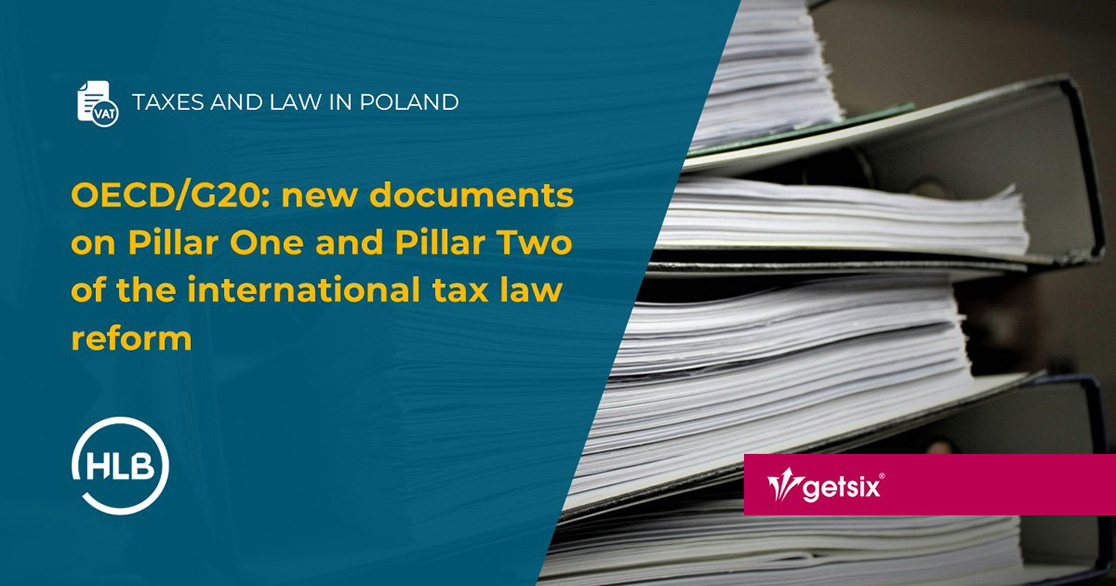OECD/G20: new documents on Pillar One and Pillar Two of the international tax law reform
28 August 2024
28 August 2024

In recent years, international tax law reform, led under the auspices of the OECD and G20, has gained prominence as a key element of global efforts towards tax fairness. This reform, known as the “Inclusive Framework on BEPS” (Base Erosion and Profit Shifting), is based on two main pillars: Pillar One and Pillar Two. In 2024, additional documents were published that clarify and further develop the principles of these pillars, representing another step towards establishing a more balanced and effective global tax system.
Pillar One focuses on the allocation of taxation rights over the profits of multinational corporations across different jurisdictions. This is particularly relevant for the largest and most profitable companies in the digital and technology sectors, which have thus far been able to effectively avoid paying taxes in the countries where they actually generate income. The goal of Pillar One is to introduce a new system in which a portion of these companies’ profits is allocated to the countries where consumers and users actually benefit from their products and services, rather than just where the companies are headquartered for tax purposes.
Pillar Two introduces a global minimum corporate income tax aimed at preventing a “race to the bottom” in tax policies, where countries compete by lowering tax rates to attract foreign investment. The minimum tax is set at 15% and is intended to curb the shifting of profits to tax havens.
In 2024, the OECD published a series of additional documents that elaborate on and refine the rules of Pillar One and Pillar Two. These documents provide detailed guidelines for implementing the new rules, taking into account the specificities of different jurisdictions and the needs of companies operating in the international market.
A key element of the new documents is the clarification of the methodology for calculating and allocating profits under Pillar One. These documents explain how different types of business activities should be treated, what financial data are needed to correctly calculate the taxes due, and how disputes between countries over profit allocation should be resolved.
In the context of Pillar Two, the new documents introduce more detailed rules for calculating the effective tax rate and the compensatory mechanisms designed to ensure that multinational corporations pay at least 15% tax in every jurisdiction where they operate. These rules also cover exceptions, as well as mechanisms for verifying and enforcing the new regulations.
The publication of additional documents by the OECD is highly significant for the continued implementation of international tax law reform. Although not yet fully implemented, these regulations set new standards for the taxation of multinational corporations. They are particularly important in the context of increasing globalization and digitalization, which allow companies to avoid taxation within traditional legal frameworks.
The new guidelines also assist OECD member countries in preparing for the implementation of the new rules, contributing to the harmonization of the global tax system. The introduction of a minimum tax rate and new profit allocation rules aims not only to increase tax revenues in countries where large corporations operate, but also to enhance the transparency and fairness of the tax system.
Despite the progress, the implementation of Pillar One and Pillar Two faces several challenges. One of these is the need to achieve global consensus on the details of implementing the new rules, which may be difficult given the diverse interests of different countries. Another challenge is the technical and administrative implementation of these rules within individual states, requiring coordinated efforts and appropriate legislative and administrative tools.
However, the publication of additional documents by the OECD in 2024 marks a significant step forward in the pursuit of a more just and effective global tax system. These guidelines provide member countries and multinational corporations with greater clarity regarding the expectations and requirements associated with the new reform, bringing the world closer to achieving the goals set by the OECD and G20 in the area of international taxation.
 Source: This article was prepared by Tomasz – Senior Tax Consultant at getsix® Tax & Legal
Source: This article was prepared by Tomasz – Senior Tax Consultant at getsix® Tax & Legal
If you have any further questions or require additional information, please contact your business relationship person or use the enquiry form on the HLB Poland website.
***
Download the brochures providing general information and outlining the services that are offered by HLB member firms.
Learn moreClick below for more detailed information regarding population, major towns and cities, language, religion and holidays in Poland.
Learn more